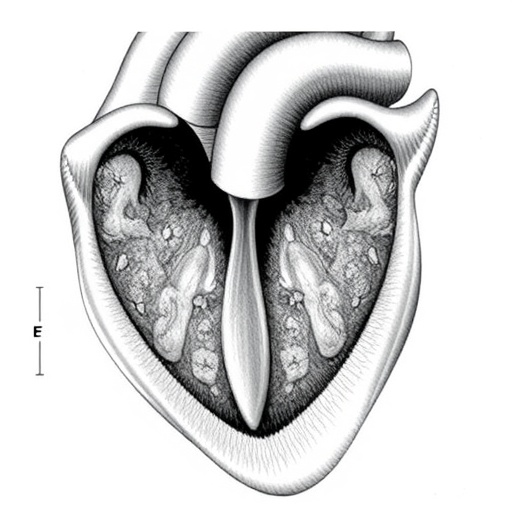Based on studies published through July 2021, most SARS-CoV-2 infections were not persistently asymptomatic, and asymptomatic infections were less infectious than symptomatic infections. These are the conclusions of an update of a systematic review and meta-analysis publishing May 26th in the open access journal PLOS Medicine by Diana Buitrago-Garcia of the University of Bern, Switzerland, and colleagues.

Credit: Monstera, Pexels (CC0, https://creativecommons.org/publicdomain/zero/1.0/)
Based on studies published through July 2021, most SARS-CoV-2 infections were not persistently asymptomatic, and asymptomatic infections were less infectious than symptomatic infections. These are the conclusions of an update of a systematic review and meta-analysis publishing May 26th in the open access journal PLOS Medicine by Diana Buitrago-Garcia of the University of Bern, Switzerland, and colleagues.
Debate about the level and risks of asymptomatic SARS-CoV-2 infections continues, with much ongoing research. Studies that assess people at just one time point can overestimate the proportion of true asymptomatic infections because those who go on to later develop symptoms are incorrectly classified as asymptomatic rather than presymptomatic. However, other studies can underestimate asymptomatic infections with research designs that are more likely to include symptomatic participants.
The new paper was an update of a living (as in, regularly updated) systematic review first published in April 2020, which includes additional, more recent studies through July 2021. 130 studies were included, with data on 28,426 people with SARS-CoV-2 across 42 countries, including 11,923 people defined as having asymptomatic infection. Because of extreme variability between included studies, the meta-analysis did not calculate a single estimate for asymptomatic infection rate, but it did estimate the inter-quartile range to be that 14–50% of infections were asymptomatic. Additionally, the researchers found that the secondary attack rate—a measure of the risk of transmission of SARS-CoV-2 — was about two-thirds lower from people without symptoms than from those with symptoms (risk ratio 0.32, 95%CI 0.16–0.64).
“If both the proportion and transmissibility of asymptomatic infection are relatively low, people with asymptomatic SARS-CoV-2 infection should account for a smaller proportion of overall transmission than presymptomatic individuals,” the authors say, while also pointing out that “when SARS-CoV-2 community transmission levels are high, physical distancing measures and mask-wearing need to be sustained to prevent transmission from close contact with people with asymptomatic and presymptomatic infection.”
Coauthor Nicola Low adds, “The true proportion of asymptomatic SARS-CoV-2 infection is still not known, and it would be misleading to rely on a single number because the 130 studies that we reviewed were so different. People with truly asymptomatic infection are, however, less infectious than those with symptomatic infection.”
#####
In your coverage, please use this URL to provide access to the freely available paper in PLOS Medicine:
http://journals.plos.org/plosmedicine/article?id=10.1371/journal.pmed.1003987
Citation: Buitrago-Garcia D, Ipekci AM, Heron L, Imeri H, Araujo-Chaveron L, Arevalo-Rodriguez I, et al. (2022) Occurrence and transmission potential of asymptomatic and presymptomatic SARS-CoV-2 infections: Update of a living systematic review and meta-analysis. PLoS Med 19(5): e1003987. https://doi.org/10.1371/journal.pmed.1003987
Author Countries: Switzerland, France, Spain, Argentina, United Kingdom, Sweden, United States, Colombia
Funding: This study was funded by the Swiss National Science Foundation http://www.snf.ch/en (NL: 320030_176233); the European Union Horizon 2020 research and innovation programme https://ec.europa.eu/programmes/horizon2020/en (NL: 101003688); the Swiss government excellence scholarship https://www.sbfi.admin.ch/sbfi/en/home/education/scholarships-and-grants/swiss-government-excellence-scholarships.html (DBG: 2019.0774) and the Swiss School of Public Health Global P3HS stipend https://ssphplus.ch/en/ (DBG). The funders had no role in study design, data collection and analysis, decision to publish, or preparation of the manuscript.
Journal
PLoS Medicine
DOI
10.1371/journal.pmed.1003987
Method of Research
Systematic review
Subject of Research
People
COI Statement
Competing interests: I have read the journal’s policy and the authors of this manuscript have the following competing interests: NL is an academic editor at PLOS Medicine, received the grant funding from the organisations declared above, is a member of the Swiss National COVID-19 Science Task Force, and is on the scientific board of Sefunda, a start-up company that develops point-of-care diagnostics for sexually transmitted infections. DBG receives funding from the organisations declared above. AMI, LH, HI receive salary support from the grants to NL from the Swiss National Science Foundation 320030_176233, and/or European Union H2020 101003688




